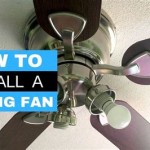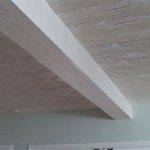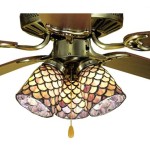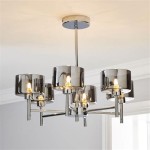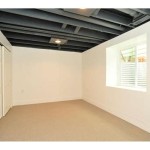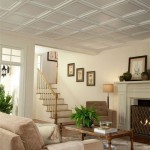Cost to Install Beadboard Ceiling: A Comprehensive Guide
Beadboard ceilings offer a classic, textured aesthetic that can elevate the design of any room. They are a popular choice for both new construction and renovation projects, prized for their visual appeal and ability to conceal imperfections in existing ceilings. However, the decision to install a beadboard ceiling often hinges on understanding the associated costs. This article provides a detailed breakdown of the factors influencing the total cost of installing a beadboard ceiling, enabling informed budgeting and decision-making.
The overall cost of a beadboard ceiling installation is determined by a combination of material costs, labor charges, and potential additional expenses related to preparation, modifications, or unforeseen issues. Careful consideration of each of these components is crucial for accurate cost estimation. This article will explore each element, providing ranges and examples to help homeowners and contractors alike navigate the process effectively.
Material Costs for Beadboard Ceiling Installation
The primary material cost associated with a beadboard ceiling is, of course, the beadboard itself. Beadboard is typically available in two main forms: individual planks or sheets (often 4x8 feet). Plank beadboard offers a more traditional look and allows for greater customization in terms of pattern and spacing. Sheet beadboard, on the other hand, provides faster installation and often results in a lower overall material cost. The choice between planks and sheets depends on aesthetic preferences, budget constraints, and the complexity of the ceiling structure.
The material composition of the beadboard also significantly impacts the cost. Beadboard is commonly available in wood (pine, cedar, or other softwoods), MDF (Medium-Density Fiberboard), and PVC (Polyvinyl Chloride). Wood beadboard offers a natural look and can be stained or painted to match any decor. It is generally more expensive than MDF or PVC. MDF is a cost-effective option that is easy to work with and paints well, but it is susceptible to moisture damage and is not suitable for bathrooms or other high-humidity environments. PVC beadboard is waterproof, making it ideal for bathrooms, kitchens, and covered porches. It is typically more expensive than MDF but offers superior durability and resistance to moisture and pests.
Pricing for beadboard varies widely depending on the material, quality, and supplier. As a general guideline, expect to pay the following (per square foot):
- Pine Beadboard Planks: $3 - $7
- Cedar Beadboard Planks: $5 - $10
- MDF Beadboard Sheets: $1.50 - $3
- PVC Beadboard Sheets: $2.50 - $5
In addition to the beadboard itself, other materials are necessary for installation. These include:
- Furring Strips: These wooden strips are attached to the existing ceiling to provide a level surface for the beadboard. The cost of furring strips typically ranges from $1 to $3 per linear foot, depending on the wood type and dimensions.
- Fasteners: Screws or nails are used to secure the beadboard to the furring strips. The cost of fasteners is relatively minor, typically ranging from $10 to $30 for a standard-sized room.
- Adhesive (Optional): Construction adhesive can be used in conjunction with fasteners for added stability, particularly when installing beadboard directly to a solid surface. The cost of adhesive typically ranges from $5 to $15 per tube.
- Primer and Paint (If Applicable): If painting the beadboard, factor in the cost of primer and paint. The cost of primer typically ranges from $20 to $50 per gallon, while the cost of paint can range from $25 to $75 per gallon, depending on the quality and brand.
- Caulk: Caulk is used to seal gaps and create a clean, finished look. The cost of caulk typically ranges from $5 to $10 per tube.
- Trim (Optional): Crown molding or other decorative trim can be added to the perimeter of the ceiling for a more polished appearance. The cost of trim varies widely depending on the style, material, and size.
Calculating the total material cost involves determining the square footage of the ceiling, accounting for waste (typically 10-15%), and adding the cost of all necessary materials. For example, a 10x12 foot room (120 square feet) would require approximately 132 to 138 square feet of beadboard to account for waste. Using MDF beadboard sheets at $2 per square foot, the beadboard cost would be approximately $264 to $276. Adding the cost of furring strips, fasteners, adhesive, primer, paint, caulk, and optional trim would increase the total material cost accordingly.
Labor Costs for Beadboard Ceiling Installation
Labor costs represent a significant portion of the total cost of a beadboard ceiling installation. Hiring a professional ensures proper installation, which can save time and prevent costly mistakes. Labor costs are typically calculated on an hourly basis or per square foot.
Hourly labor rates for carpenters or contractors typically range from $50 to $100 per hour, depending on the location, experience, and demand. Per-square-foot labor rates typically range from $3 to $8, depending on the complexity of the project and the type of beadboard being installed. More intricate designs or installations in difficult spaces (e.g., ceilings with angles or obstructions) will generally command higher labor rates.
The time required to install a beadboard ceiling varies depending on several factors, including:
- The size of the room: Larger rooms naturally require more time to install.
- The complexity of the ceiling: Ceilings with angles, curves, or obstructions will require more time and skill.
- The type of beadboard being installed: Plank beadboard typically takes longer to install than sheet beadboard.
- The experience of the installer: Experienced installers can typically complete the job more quickly and efficiently.
- The condition of the existing ceiling: If the existing ceiling is uneven or damaged, additional time may be required to prepare the surface.
As a general guideline, a professional installer can typically install a beadboard ceiling in a standard-sized room (e.g., 10x12 feet) in one to two days. This includes time for preparation, installation, and finishing work. Using an hourly rate of $75, this would translate to approximately $600 to $1200 in labor costs. Using a per-square-foot rate of $5, this would translate to approximately $600 in labor costs for a 120 square foot ceiling.
It is always recommended to obtain multiple quotes from different contractors before making a decision. Be sure to ask for a detailed breakdown of the labor costs, including the hourly rate or per-square-foot rate, the estimated time required to complete the job, and any additional charges for preparation, finishing work, or travel. Checking references and reviewing online reviews can provide valuable insights into the quality and reliability of potential contractors.
Additional Costs and Considerations
In addition to the material and labor costs, several other potential expenses should be factored into the overall cost of a beadboard ceiling installation. These include:
- Preparation Costs: The existing ceiling may require preparation before the beadboard can be installed. This may involve repairing cracks or holes, leveling uneven surfaces, or removing existing ceiling materials. Preparation costs can range from $50 to $500 or more, depending on the extent of the work required.
- Electrical Work: If the installation involves relocating or replacing light fixtures, electrical work will be necessary. Hiring a licensed electrician can add $50 to $150 per hour to the overall cost.
- Permits: In some jurisdictions, a building permit may be required for ceiling renovations. The cost of a permit typically ranges from $50 to $200, depending on the location and the scope of the work.
- Waste Disposal: Disposing of waste materials, such as old ceiling tiles or scrap beadboard, may incur additional costs. The cost of waste disposal typically ranges from $50 to $100.
- Unexpected Issues: Unforeseen issues, such as hidden wiring or plumbing, can arise during the installation process. It is always prudent to set aside a contingency fund (typically 5-10% of the total project cost) to cover unexpected expenses.
- Accessibility: Difficulty accessing the ceiling due to height, obstructions, or confined spaces can increase labor costs. Installers may require specialized equipment or additional time to complete the job in challenging environments.
When budgeting for a beadboard ceiling installation, it is essential to consider all potential costs, including materials, labor, preparation, electrical work, permits, waste disposal, and a contingency fund. Obtaining multiple quotes from different contractors and carefully reviewing the details of each quote can help ensure accurate cost estimation and prevent unwelcome surprises.
Choosing the right type of beadboard, hiring a qualified installer, and carefully planning the project can contribute to a successful and cost-effective beadboard ceiling installation. By understanding the various factors influencing the total cost, homeowners can make informed decisions and achieve their desired aesthetic within their budget.
Furthermore, consider the long-term cost benefits of different beadboard materials. While MDF may be cheaper initially, PVC's resistance to moisture can prevent future repairs and replacements in damp environments, potentially saving money in the long run. Wood beadboard, if properly sealed and maintained, can also last for many years, adding value to the home.
Proper ventilation and insulation should also be considered, especially in attics or rooms with significant temperature fluctuations. Poor ventilation can lead to moisture buildup, affecting the beadboard and potentially causing mold or mildew growth. Ensuring adequate insulation can improve energy efficiency and prevent condensation, contributing to the longevity of the beadboard ceiling.
Finally, remember to factor in the cost of any necessary tools if attempting a DIY installation. While a DIY approach can save on labor costs, tools like a miter saw, nail gun, and stud finder can be significant investments. Renting these tools may be a more cost-effective option for a single project.

How Much Does It Cost To Install A Beadboard Ceiling 2024 Data Angi

Diy Beadboard Ceiling Tutorial Easy And Inexpensive Custom Treatment

Rehab Diaries Diy Beadboard Ceilings Before And After Remodelista

How To Install Beadboard Panels On A Ceiling And Why We Ll Never Do It Again The Lake Land

How To Install A Wood Plank Ceiling Young House Love

Rehab Diaries Diy Beadboard Ceilings Before And After Remodelista

Beadboard Ceiling What It Is And How To Install Yourself

Diy Beadboard Ceiling Tutorial Easy And Inexpensive Custom Treatment

How To Install Beadboard Panels On A Ceiling And Why We Ll Never Do It Again The Lake Land

Beadboard Ceiling Emergence Inspires Home Design Renaissance
Related Posts

